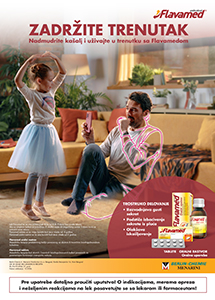SECULAR TREND IN MOTOR SKILLS OF CHILDREN AND ADOLESCENTS IN SERBIA
Keywords:
secular trend, motor skills, physical activity, children, adolescentsAbstract
The past few decades have brought about marked changes in lifestyles around the world and in all age groups, resulting in reduced physical activity and increased energy intake. Low levels of physical activity and sedentary behavior are the leading factors for a number of serious chronic diseases and one of the main causes of the so-called “obesity epidemic”, both in adults and young people. Indicators of motor skills, above all muscle strength, power and endurance, expressed in relation to body mass have shown a declining trend in the younger population over the past five decades. Recently conducted studies indicate a trend of decreasing levels of physical activity in children in Serbia. Rare research data indicate that in Serbia, a positive secular trend in body height and weight does not have a positive impact on the performance of motor tasks. We believe it is needed to change the children’s lifestyle, to create opportunities and a motivating environment for recreational activity in various forms of physical exercise or recreational sport. Regular physical activity of children and adolescents, with the improvement of their nutrition, is an effective and rewarding investment in their future.
References
Malina RM. Secular trends in growth, maturation and physical performance: a review. Anthropol Rev. 2004;67:3-31.
Ignjatović A, Cvecka J. Resistance exercises programs as a part of physical education curriculum for prevention of obesity and inactivity in children. In: Colella D, Antala B, Epifani S, editors. Physical education and best practices in primary schools. Lecce: Pensa Multimedia Editore; 2017. p. 97-108.
Radovanović D. Gojaznost adolescenata – uzroci nepravilne ishrane i značaj fizičke aktivnosti. U: Ignjatović A, urednik. Fizička kultura i moderno društvo, posebno izdanje, knjiga 17. Jagodina: Fakultet pedagoških nauka Univerziteta u Kragujevcu; 2014.str. 13-17.
Radovanović D, Ignjatović A. Secular trends in children and adolescent physical activity behavior: an alarm to increase physical activity. In: Kocić M, editor. Book of Proceedings of the XXI Scientific Conference “FIS Communications 2018”. Niš: Faculty of Sport and Physical Education; 2018.p.206-209.
Tomkinson GR, Olds TS. Secular changes in pediatric aerobic fitness test performance: the global picture. Med Sport Sci. 2007;50:46-66. PMID:17387251 DOI:10.1159/000101075
Tomkinson GR. Global changes in anaerobic fitness test performance of children and adolescents (1958–2003). Scand J Med Sci Sports. 2007;17:497-507.PMID:17181769 DOI:10.1111/j.1600-0838.2006.00569.x
Ruiz JR, Castro-Pinero J, Artero EG, Ortega FB, Sjöström M, Suni J,et al. Predictive validity of health-related fitness in youth: a systematic review. Br J Sports Med. 2009;43:909-923. PMID:19158130 DOI:10.1136/bjsm.2008.056499
Ortega FB, Ruiz JR, Castillo MJ, Moreno LA, González-Gross M, Wärnberg J, et al. Low level of physical fitness in Spanish adolescents. Relevance for future cardiovascular health (AVENA study). Rev Esp Cardiol. 2005;58(8):898-909.PMID:16053823 DOI:10.1016/S1885-5857(06)60372-1
Moliner-Urdiales D, Ruiz JR, Ortega FB, Jiménez-Pavón D, Vicente-Rodriguez G, Rey-López JP, et al. Secular trends in health-related physical fitness in Spanish adolescents: the AVENA and HELENA studies. J Sci Med Sport. 2010;13(6):584-588.PMID: 20452281 DOI:10.1016/j .jsams.2010.03.004
Ortega FB, Artero EG, Ruiz JR, España-Romero V, Jiménez-Pavón D, Vicente-Rodríguez G, et L.arapica, D. Physical fitness levels among European adolescents: the HELENA study. Br J Sports Med. 2011;45(1):20-29.PMID: 19700434 DOI:10.1136/bjsm.2009.062679
EU Working Group "Sport & Health"[Internet]. EU physical activity guidelines recommended policy actions in support of health-enhancing physical activity. [cited 2020 Jan 22]. Available from: http://ec.europa.eu/assets/eac/sport/library/policy_documents/eu-physical-activity-guidelines-2008_en.pdf
European Committee Expert Group on Health-Enhancing Physical Activity[Internet]. Recommendations to encourage physical education in schools, including motor skills in early childhood, and to create valuable interactions with the sport sector, local authorities and the private sector. [cited 2020 Jan 22]. Available from: http://ec.europa.eu/transparency/regexpert/index.cfm?do=groupDetail.groupDetailDoc&id=19860&no=1
World Health Organization[Internet]. New global estimates of child and adolescent obesity released on World Obesity Day. [cited 2020Jan 22]. Available from: http://www.who.int/end-childhood-obesity/news/new-estimate-child-adolescent-obesity/en/
Dollman J, Norton K, Norton L. Evidence for secular trends in children’s physical activity behavior. Br J Sports Med. 2005;39(12):892-897.PMID:16306494 DOI:10.1136/bjsm.2004.016675
Tudor-Locke C, Johnson W, Katzmarzyk PT. Accelerometer-determined steps per day in US children and adolescents. Med Sci Sports Exerc. 2010;42:2244-2250.PMID:20421837 DOI: 10.1249/MSS.0b013e3181e32d7f
Donnelly JE, Lambourne K. Classroom-based physical activity, cognition, and academic achievement. Prev Med. 2011;52Suppl 1:S36-42. PMID:21281666 DOI:10.1016/j.ypmed.2011.01.021
Jürimäe T, Volbekiene V, Jürimäe J, Tomkinson GR. Changes in Eurofit test performance of Estonian and Lithuanian children and adolescents (1992-2002). Med Sport Sci. 2007;50:129-142.PMID:17387255 DOI:10.1159/000101356.
Cohen DD, Voss C, Taylor MJ, Delextrat A, Ogunleye AA, Sandercock GR. Ten-year secular changes in muscular fitness in English children. Acta Paediatr.2011;100(10):175-177. PMID:21480987 DOI:10.1111/j.1651-2227.2011.02318.x
Ministarstvo zdravlja Republike Srbije. Istraživanje zdravlja stanovnika Republike Srbije za 2006. godinu. Beograd: Ministarstvo zdravlja Republike Srbije; 2007.
Ministarstvo zdravlja Republike Srbije. Istraživanje zdravlja stanovnika Republike Srbije za 2013. godinu. Beograd: Ministarstvo zdravlja Republike Srbije; 2014.
Radovanović D, Radunović M, Abramović M, Ignjatović, A. A secular trends of nutritional status of prepubescent school children: A pilot study. In: Stojiljković N, editor. Book of Proceedings of the XXI Scientific Conference “FIS Communications 2019”. Niš: Faculty of Sport and Physical Education; 2019.p.227-230.
Ivanović J, Gajević A. Razlike u antropološkom status dece osnovno školskog uzrasta.Beograd: Republički zavod za sport i medicinu sporta; 2015.
Ignjatović A, Radovanović D, Marković Ž. Actual problems of motor skills performance decrease in schoolchildren in Serbia. In: Nikiskin VA,Bumarskova NN, Kramski SI, editors.Book of Proceedings of the XXI Scientific Conference “Modern problems of physical culture and sports in the XXI century”. Moscow: National Research Moscow State University of Civil Engineering; 2018.p. 163-168.
Ignjatović A, Ninković GB, Stevanović N. (2017). Hand grip strength in 12 years old children in Serbia–changes over 50 years. Sport and Business. 2017;3:77-80.
Kocić J, Stojanović D, Stanković S, Petrović L, Ignjatović A, Savić Z et al. Muscle strength test performance changes over time in Serbian children. Acta Med Median. 2019;58(2):154-160.DOI:10.5633/amm.2019.0223
Radovanović D,Ponorac N. Napredna fiziologija vežbanja. Niš: Fakultet sporta I fizičkog vaspitanja; 2019. p.252-254.





